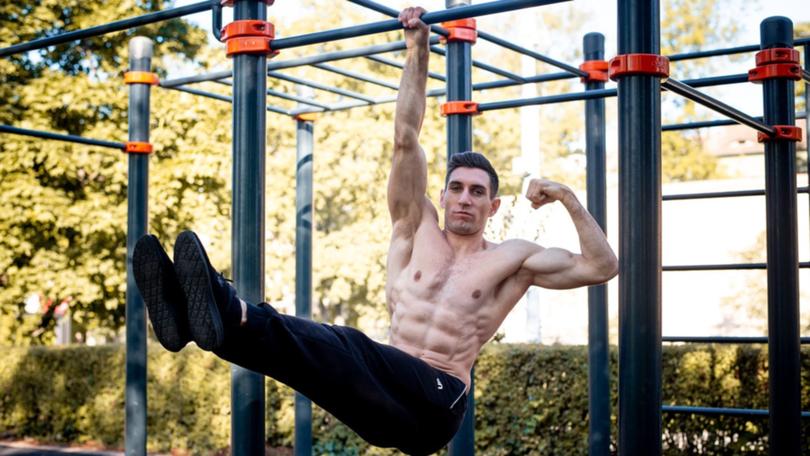The Washington Post: For healthy ageing, tend to your muscles

Life can come at you fast, even at older ages. Our muscles need to be ready to keep up. That’s challenging because unfortunately, beginning in our 30s and 40s, our muscles get smaller and less powerful, leaving us open to falls, increased insulin resistance, decreased cognitive ability, and a loss of bone density.
“There is a certain amount of inevitable change with ageing,” said Marla Beauchamp, a physical therapist and associate professor in the Institute for Research on Ageing at McMaster University in Ontario, Canada.
“There’s a decrease in both the number and size of the individual fibre in our muscles” that occurs naturally as we age, Dr Beauchamp said. “Essentially, we have both smaller and weaker muscles as we get older.”
Sign up to The Nightly's newsletters.
Get the first look at the digital newspaper, curated daily stories and breaking headlines delivered to your inbox.
By continuing you agree to our Terms and Privacy Policy.The changes are more than just of cosmetic concern. Greater rates of muscle loss have been associated with increased risks of fractures and falls, the leading cause of injury and injury death among adults older than 65.
Beginning at the cusp of middle age, the loss of muscle size and strength continues steadily after that, with declines of about 3 per cent to 8 per cent per decade.
How much of a decline someone experiences depends on several factors, including their activity level, nutrition and other health problems, like diabetes, which increases inflammation and inhibits muscle proteins.
But the loss of muscle strength with ageing is greater than would be expected by the loss of muscle size. In other words, a 5 per cent loss of muscle size in ones 50s might result in a 10 per cent loss o muscle strength. The loss of strength tends to be greater than would be predicted by the amount of muscle loss, experts say — it’s not one to one.
For that, experts say, blame the changes occurring in the brain and nervous system as we age.
“Our muscle strength is dependent not only on the amount of muscle in your leg or your arm, but also how the brain and nervous system controls that muscle,” said Brad Manor, associate director of the Mobility and Falls Translational Research Centre at Harvard University.
These age-related changes affect every level of the nervous system and include a decrease in size of the part of the brain responsible for movement, a loss of nerve cells in the spine, and disruptions in the link between the nerve and muscle.
Strength and power might seem like the same, but really they’re not, Dr Manor said.
“Muscular strength is like the engine’s ability to produce raw horsepower. (It) is about how much force your muscles can generate, regardless of how fast or quickly you can apply that force.”
Muscular power, on the other hand, he said, was like the engine’s ability to accelerate quickly, combining both the force the engine could produce and how rapidly it could produce it. In the same way, muscular power refers to how quickly and forcefully your muscles can generate strength, such as in a jump or quick turn.
Of the two, muscular power might be the variable that needs the most focus to preserve function as we age.
“In all of our daily activities, if you think of selecting the right walking speed or standing up from a chair, you have to do that with not only the right amount of force, but the right amount of speed in order to be safe and effective in that movement,” Dr Manor said.
In a commentary for JAMA Network Open, Dr Manor underscored the importance of power.
“As we age from adulthood into senescence, our muscle power fades sooner and more rapidly than strength,” he said.
“Moreover, insufficient power, compared with strength, is often a better indicator of current physical function and the possibility of future falls. It logically follows that strategies designed to augment muscle power may be more beneficial for older adults.”
Every daily task involves an element of power, even those performed at a slow pace, but this is especially true for more sudden, catastrophic movements, such as falls.
“Falls occur quickly and from the time you lose your balance, you don’t have very much time to catch yourself,” Dr Manor emphasised. “As you stumble, you have to generate force very, very quickly in order to resist that pull of gravity.”
Why power training matters
However, as we age speed often isn’t encouraged when working out or getting exercise.
“The older person goes to gym and is told to do the exercise slowly, they go to physical therapy and do rehab very slowly,” said Sandro Freitas, a professor in the Neuromuscular Function Laboratory at the University of Lisbon in Portugal.
There was a cultural environment, he said, that told older people to be slow, and that was not always the best way to stimulate ageing muscles and preserve their power.
Because it evokes images of athletes jumping, sprinting and throwing, power training — combining strength training with faster movements — can seem like something best left for the young. But that was training for maximal force at maximum velocity, Dr Manor said, and “we can improve power in many different ways that are probably more desirable for many older adults than the traditional view of what power training is”.
For some older adults, standing up quickly from a chair can be power training because it trains the muscles to supply a rapid force. Strength training and power training can use the same exercises, just at different speeds.
This doesn’t mean abandoning strength training.
“This isn’t to say that you should stop everything and just do power,” Professor Freitas said. “You should just add a little bit of power to strength training, because a multi-component exercise program is the best for overall health.”
Exercise difficulty could be progressed in any given exercise by changing the speed, the base of support (balancing on one leg instead of two), adding resistance, or even integrating a cognitive challenge (like counting down from 20 or thinking of words that start with “M”) while exercising, Dr Beauchamp said.
Try these four muscle-building exercises
Dr Beauchamp recommended starting with the following four muscle-building exercises, twice a week.
Start with one set of 10 repetitions of each exercise and progress to doing two sets. One set can be done at a controlled pace, the strength portion. Once you’re comfortable, the other set, dedicated to improving power, should be done at a faster speed. And it’s worth checking with your physician before you start if this is new for you, or to work with a trainer or physical therapist.
Sit to stand, or squats (primary muscles affected: quads, glutes, hamstrings)
Sit near the front of a sturdy chair with your feet flat on the ground. Lean forward and stand up, pushing up through your legs. Lower yourself back down slowly to sit in the chair. Repeat this 10 times. You can use your hands for support to help you push up if needed. To increase the difficulty, you can cross your arms across your chest, or increase the speed with which you stand up.
To do a squat, stand with your feet shoulder-width apart. Keep your back straight. Slowly bend your knees and push your hips back as if you’re sitting down in a chair, keeping your weight balanced side to side. Lower your body as much as you can or until your thighs are not quite parallel to the floor. Return to standing. Do this 10 times.
To increase the difficulty you can add a light weight, such as a dumbbell, kettlebell or barbell, grasped in both hands. Increasing the speed with which you stand up from the squat position will also increase the difficulty.
Wall push-ups (pecs/chest, shoulders, triceps)
Stand facing the wall, with your feet about a foot away from it. Place your hands, palms open, on the wall at shoulder height and shoulder-width apart. Bend your elbows and lean your body toward the wall, keeping your body straight from head to heels. Then push yourself back to the starting position by straightening your arms. Keep your body in a straight line throughout the movement. Do this 10 times.
To increase the difficulty, you can stand farther from the wall, or place your hands on a countertop and lean in and then push back without bending your body. The hardest position will be what most people think of as a standard push-up, with hands on the ground, arms straight and feet stretched out behind you (either together or to make it somewhat easier, feet apart at about shoulder width). Keeping your body straight the whole time, lower down several inches and then push back up. You can make this even harder by lowering slowly and then pushing back up quickly.
Calf raises (calf muscles)
Stand with your feet hip-width apart, with your weight evenly distributed side to side. Slowly rise up on to the balls of your feet, lifting your heels as high as you can while keeping your legs straight. Hold for two to three seconds at the top, then slowly lower your heels back down to the ground. Do this 10 times.
As you start out, or if you have balance issues, hold on to a table or counter for support. As you improve you can try this without the extra support. For the greatest challenge, try the exercise on a single leg, holding the other off the floor, with or without holding on to a support. To increase the power challenge, lift up on to the balls of your feet quickly and slowly lower.
Step-ups (quads, glutes, hamstrings, hip abductors)
To do a step-up, stand in front of a step or sturdy low bench, ideally with a railing or something nearby to hold for support. Place one foot on the bench or step, pressing through your heel and straightening your leg to full step-up. After you have straightened your knee and leg, step back down with the same leg. Repeat 10 times, alternating legs with each step.
To strengthen your hip muscles, you can also do side step-ups. Stand with your step or box on your right side. Bend your knee and place your right foot on the step. Stand up straight, tapping your left foot on the step, then slowly lower your left foot back to the floor. Do this 10 times and then repeat on the opposite side. To increase the difficulty, do the step-up movement more quickly.
© The Washington Post
